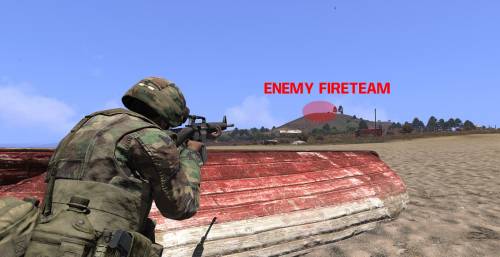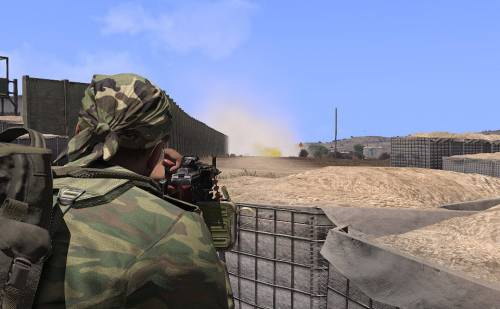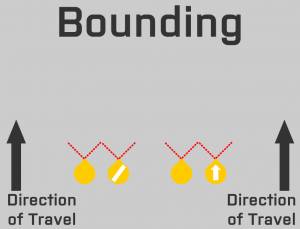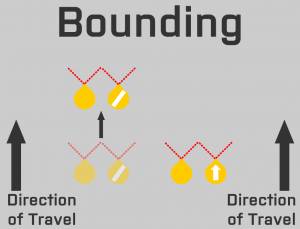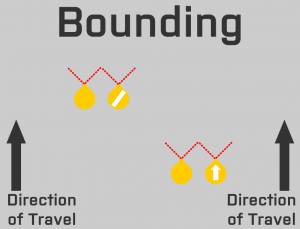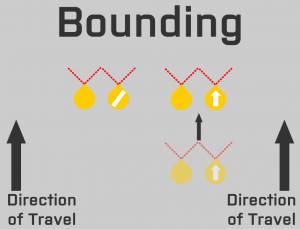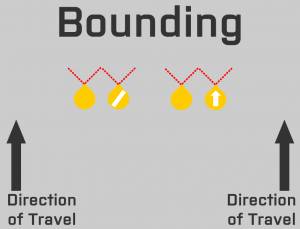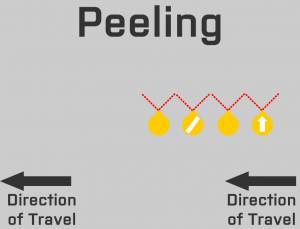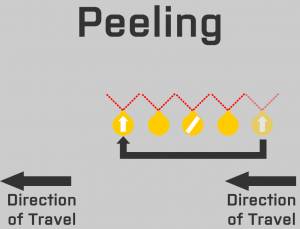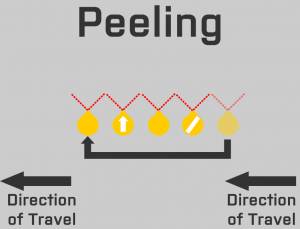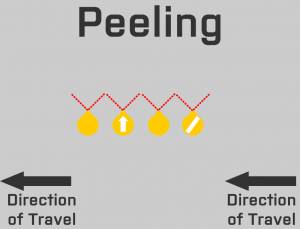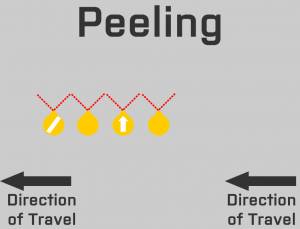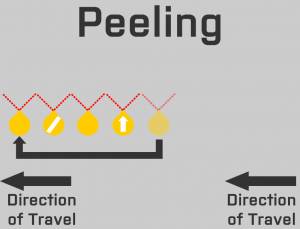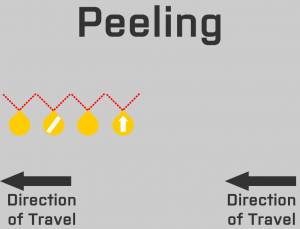Firefights
In this page we aim to provide the reader with the knowledge to understand and exercise tactical thinking in a firefight. We start by introducing the basics of a firefight. We then discuss the tactics that are typically employed in firefights. Lastly we discuss how to use these tactics as part of a plan to win a firefight.
What makes up a firefight?
A firefight is a gunfight between two opposing forces. In this page we aim to provide the reader with a solid understanding of a firefight and how to make the most of it. There are many variables to take into consideration during a firefight. Firefights typically require soldiers have a line of sight (LOS) on targets they are engaging.
Line of sight (LOS)
The first thing for a firefight to occur is that one side must find the other.
Example: A US Army solider spots an enemy fireteam coming over a hill and initiates a firefight.
The first thing to consider when planning is the LOS any given location provides. If troops are in positions with poor lines of sight they will not be able to support in a firefight. If two elements are to support each other they must have LOS on positions where enemies can engage the other unit.
The more riflemen with LOS on a target the faster the target will die.
Hills and high ground tend to offer good LOS. In return though they can also be engaged from a multitude of positions. Cover and concealment (trees/rocks/forests/buildings) block line of sight. It is often wise to at least place some infantry on high ground to find the enemy.
To prevent the enemy from engaging you all you need to do is break line of sight. The best way is to get behind cover or fall behind terrain that blocks LOS. Smoke grenades are an essential tool for blocking LOS. They are essential for offering a bridge through open terrain in both withdrawals and assaults. Recall from the basic infantry skills page that infantry should always be in cover. So use smoke as a bridge between positions that offer cover or concealment.
Example: Smoke is employed to the block the visibility of an enemy machinegunner. Soldiers are able to attempt to cross the road behind the smoke with a greater chance of staying alive as the machinegunner can no longer see them.
As a commander or leader you need to get proficient in reading the map to understand the LOS of different locations and approaches.
In summary: A firefight can be initiated as long as least one side can see the other and can be blocked by moving out of line of sight. Note that not all weapon systems require line of sight and enemies may well engage previously known locations or locations indiscriminately.
Fire superiority
Fire superiority is gained when one side is shooting more than the other. Usually the side that sustains fire superiority will win the engagement. The effect is two-fold. Firing more may improve the chances of hitting the enemy.
This then becomes a physiological affect where it becomes apparent to soldiers on both sides which side is firing more. This will cause the losing side to typically seek cover and consider withdrawing in fear of their life.
The first few seconds in a firefight can therefore be decisive in determining which side wins. You need to pour down accurate high rate of fire on the enemy to ensure that your side gains fire superiority.
Suppressive fire is typically used in an attempt to gain fire superiority even if for just short periods of time as part of a wider plan.
Note: It isn’t enough to just shoot at enemy it also needs to be accurate to dissuade them from firing.
Tactics
Base of fire
An element tasked with providing a base of fire sets up defensively in cover and will be ready to engage and supress enemy contacts. By default they will attempt to cover all areas around them unless stated otherwise. Bases of fire are used to provide fire support from a position and deny the enemy easy movement in areas they have LOS on. Typically an element providing a base of fire should be positioned such that they have good LOS on areas of interest. Ideally the position should also offer cover to the element.
Overwatch
If an element is tasked with over-watching another element they are tasked with aiding in the protection of another element. At the least if the element they are tasked with overwatching comes under fire they must engage the enemies engaging them. This is best achieved by the overwatching element using positions in which they can engage any enemies that attempt to engage the element being overwatched. Overwatch by default is carried out from a fixed position.
Travelling overwatch - ‘Travelling overwatch’ is where the overwatching element moves behind or to the flank of the other element. Though they may not be able to provide effective support.
Fire and movement tactics
Fire and movement tactics work on the principle that when units move they should be covered by other units. The covering element/s provide security to the exposed and vulnerable moving element. If the covering element notice any enemies that pose any danger to the moving element they will suppress and engage those enemies. The enemy’s ability to engage the moving element is thus impeded as they will be forced to attempt to return fire on the overwatching element. This offers protection for the moving element. Any advance through territory where the possibility of enemy contact exists should be done with fire and movement tactics.
The following fire and movement tactics can be applied at any level of command pair/fireteam/squad/platoon.
Bounding overwatch
Bounding overwatch is commonly used tactic. Elements take turns in moving (bounding) or overwatching the other element. Ingame we refer to it pair/fireteam/squad bounding depending on the size of the bounding element. This is an extremely effective tactic to advance while offering security to the advancing troops.
For example in pair bounding: one pair provides over-watch while the other bounds.
Step 1) Fireteam is a line formulation and order to bound is issued
Fireteam leader who doubles up as red pair lead says: A1 pair bounding, blue team overwatchs first. Blue say when set.
Blue pair lead: Blue set
Step 2) Red team starts moving.
Red pair lead: Red bounding
Step 3) Red pair setups and communciates back to blue team when they are ready to overwatch
Red pair lead: Red set.
Step 4) Blue pair acknowledges and starts bounding
Blue pair lead: Blue bounding.
Step 5) Blue pair reaches the next step
Blue pair lead: Blue set.
Peeling
Peeling generally used to shift an element to the left or right. It provides the opportunity to have more guns on target than bounding overwatch as the moving element can be smaller. Peeling is typically employed when the unit is already in a line formation. The number of people peeling at once can be specified by the leader. By default just one person will peel at a time.
Example: Peeling used in a fireteam.
Step 1) Fireteam is a line formulation and order to peel is issued
Fireteam leader says: A1 peel left.
Step 2) Right most person starts peeling and says he is moving. The new right most person keeps firing but alert so that he can move as soon as soon as the previous man is in position.
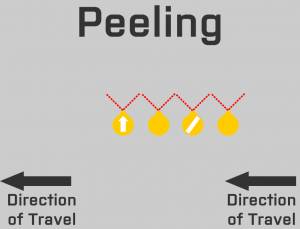
Step 3) He arrives.
Step 4) The next right most person starts peeling and says he is moving. The new right most person keeps firing but alert so that he can move as soon as soon as the previous man is in position.
Step 5) He arrives.
Step 6) The next right most person starts peeling and says he is moving. The new right most person keeps firing but alert so that he can move as soon as soon as the previous man is in position.
Step 7) He arrives.
Step 8) The next right most person starts peeling and says he is moving. The new right most person keeps firing but alert so that he can move as soon as soon as the previous man is in position.
Step 9) He arrives.
The peeling move should be repeated as long as necessary to reach the intended final position.
Strategy 101: Winning a firefight
In the previous sections we discussed some tactics you can employ to get the best out of various situations. In this section we focus on the overall strategy of winning a firefight as dictated by the platoon leader and somewhat by the squad leaders.
One thing often overlooked by commanders is the benefit of mutual support between elements. Elements that are close together such that they have line of sight on positions where the other element could be engaged from can provide mutual support. Having another element supporting will help to ensure the enemy gets engaged from yet another angle and get more fire on target greatly increasing the chances of the enemy taking causalities and lowers the chances of friendlies taking them. Ideally squads should be position to offer mutual support to other squads.
Find, Fix, Flank and Finish
Find, fix, flank & finish (The four Fs) is a strategy created by the US army during World War 2 for winning firefights. It demonstrates the principles needed to decisively win a firefight.
Find
Finding the enemy is a critical task. Knowing the positions and composition of the enemy forces will greatly aid in producing a viable plan to destroy them. When planning to advance through enemy territory you should typically aim to:
- Minimize the chance of the enemy unexpectedly ambushing your forces (where possible). When planning an advance it is essential to consider the potential of hidden/unexpected enemy positions and consider how much damage they could inflict.
- Maximize the visibility of friendly units. High ground typically offers vast sight lines and having an element or two provide 360 coverage from high positions might be wise. Also spreading the platoon out offers more visibility. Friendly units will then be able to call enemy positions over the radio so the entire team can better anticipate them.
Fix
Fixing has the primary aim of keeping the enemy in place such that they can not withdraw or return fire. This requires using overwhelming firepower. This is typically achieved through having friendly units fire in large volume at the enemy positions. Ideally setting up in positions that offer dominate positions over the enemy positions. From these positions they will then suppress the enemy. Armoured vehicles are ideal as they can easily provide immense firepower on the enemy positions.
Flank
Once the enemy is fixed in position. A frontal assault is typically quite dangerous due to the high likelihood of friendly fire and secondly the enemy likely to anticipate it and it may even be their most guarded flank. As such an assaulting element will be used to assault assault the enemies' weakpoint with the purpose of maximizing damage. If coordinated properly as the assaulting elements move. The units that are fixing the enemy will shift their fire to avoid friendly fire.
Finish
The assaulting element will continue to exploit the weakness and should be able to finish the assault of the enemies position and mop up any remaining enemies.
Summary: Use overwhelming firepower to keep the enemy in place then use a flanking element to assault the position.
Assault Strategy
Using 'Find, Fix, Flank and Finish' is a good idea for assaulting. It can even be used repeatedly. The important thing to do is to isolate at least some of the enemies then you can fix, flank and finish them. You may also be able to force their supporting elements to withdraw making an assault on the isolated force even easier.
Defence Strategy
All you need to do is make it as hard as possible for the enemy force to implement the above principles. For instance taking the high ground and spotting the enemy first will provide an early advantage. Most importantly you must focus on minimizing the effectiveness of any enemy attempt to fix and/or flank your forces. Therefore you should aim to prevent the enemy from isolating any of your forces. Having elements that can mutually support each other will help avoid isolation. Using a tiered defence with concealed withdrawal routes will help prevent the enemy from fixing your forces. Keeping elements providing security may help in preventing the enemy from flanking you. You must also anticipate and prepare for an attack from any direction.
